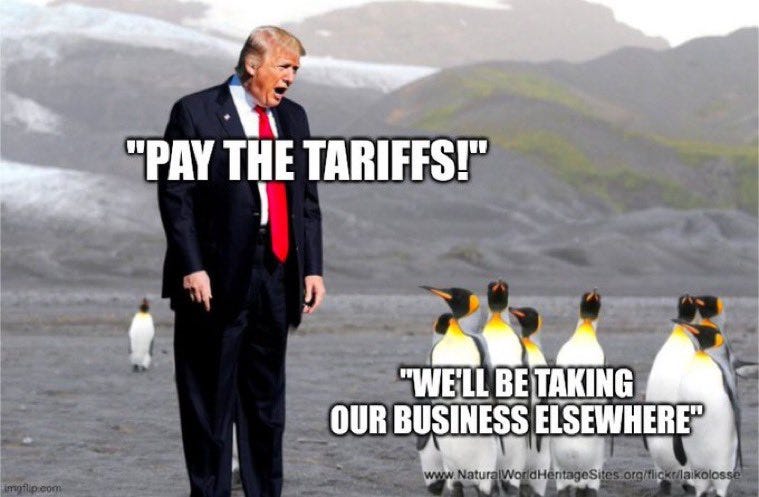Tariffs, Trade Wars and Abstinence Messaging
What a week it’s been in the drinks trade
Well, the “dumbest trade war in history” has kicked off, and it turns out that “dumb” is not the right word.
Unfortunately, I can’t tell you what the right word is, because words fail me.
Meme via X.
From the moment Trump produced that tariff list, it was clear that something strange was going on. Because despite what it said, the EU doesn’t impose anything like 39% tariffs on American goods, even if you want to include local value-added taxes. The numbers for the other countries looked weird, too.
It was 10 pm in Europe, and I was sitting on a hotel bed in Verona drinking a non-alc gin & tonic and I suddenly, deeply, regretted my choice of drink. I was in Verona for the 5StarWines competition and I’d tasted and spat 96 wines that day, so thought I wasn’t in the mood for alcohol.
Still, it was something of a relief to hear that the tariffs on the EU are “only” 20%, though the 200% tariffs on wine and spirits are still a possibility. Not such great news for South Africa, at 30%.
But where did that 39% figure come from?
American journalist James Surowiecki had the answer in short order — the White House took the trade deficit with each country, divided it by that country’s exports, and halved the number. So the “tariffs” are a measure of the trade gap between the US and each country. Where no trade gap exists — or even when the US is in surplus — the Trump people whacked them with 10% anyway.
Even islands inhabited only by penguins did not escape.
Poor Lesotho, which exports diamonds to the US but whose own citizens are too poor to buy anything in return. They got a 50% tariff.
What’s truly amazing is that internet sleuths quickly realised that the tariffs were probably generated by AI. Grok, ChatGPT, Claude and Gemini all produce much the same list.
Anyway, you’ve probably all read plenty of analyses of what this means for the drinks trade by now. Short version: nothing good, including for US producers, who are going to have to pay more for glass, capsules, corks, and distilling ingredients like botanicals, as well as for aluminium.
The best analysis of what it means for the US wine market specifically is this article by Eric Asimov in the NY Times (gift link).
Now everyone just has to wait and see whether the EU retaliates with 50% tariffs on American whiskey or not. Fingers crossed they don’t, so the catastrophic 200% tariffs aren’t triggered.
Cheery alcohol control news
I thought it was time to change the mood, so I’m going to do a roundup of what’s been going on in alcohol and health policy this week.



